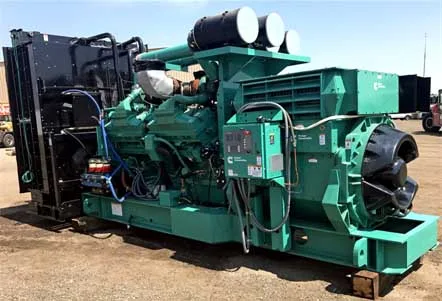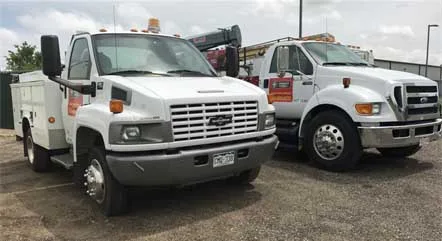NFPA 110 Standard for Emergency and Standby Power Systems
Fire Suppression System
The National Fire Protection Association (NFPA) is a nonprofit organization that was established in 1896 to eliminate death, injury, and property loss due to fire and electrical rated hazards. The association creates and publishes codes and standards that are published in separate documents. NFPA 110 is the Standard for Emergency and Standby Power Systems. This document is divided into the chapters outlined below.

Chapters 1 through 4
The first three chapters are informational and introduce the document as of August 2018.
Chapter 1
Aids in establishing a framework for using and applying the standard.
Chapter 2
Lists mandatory publications referenced within the NFPA 110.
Chapter 3
Contains official NFPA definitions and general definitions.
Chapter 4
Introduces fire suppression systems and provides examples of facilities that require installed protection systems. NFPA 110 does not determine which occupancies require a Level 1 or Level 2 classification. However, NFPA 101 (Life Safety Code) and NFPA 99 (Health Care Facilities Code) provide requirements for these buildings. Requirements are divided into two levels:
- Level 1 classifications are issued when systems have a direct impact on life or safety with power interruptions.
- Level 2 classifications are issued when the operation of the system is less critical to life safety from a loss of power.
Chapter 5: Generator Ratings & Fuel Storage
This chapter defines sizing power generation systems and supplies design information on basic generator accessories. Generators can have different ratings indicating overall operating capacity shown below:
- Standby: 60 to 70% of the rating for 24-hour periods up to 500 hours per year operating time.
- Emergency Standby: 60 to 70% of the rating for 24-hour periods up to 200 hours per year operating time.
- Prime: 60 to 70% of the rating for extended periods with 10% overload for one hour, with unlimited operating hours.
- Mission Critical: 85% of the rating for extended periods with up to 500-hour per year operating time.
- Continuous: 100% of the rating for extended periods with unlimited operating hours.
Fuel storage and day tank sizing are defined in this chapter. An example is the combined fuel storage capability of a day tank and main storage tank must allow for 96 hours of operation for Level 1 systems. Batteries, generator monitoring, and alarm systems are also included in this chapter.

Chapter 6: Transfer Switches
This chapter is devoted to the transfer switch. This switch is required to allow the generator to assume the electrical load.
Manual switches
Require the operator to physically energize the switch to allow load to be transferred to the generator.
Automatic Transfer Switch (ATS)
The most common style of switch in use for emergency generators. When utility power is lost, the switch transfers the load to the emergency generator when it’s ready to accept it. Once utility power is returned, the ATS transfers the load back to the utility system. Only component specifications are provided, not manufacturer recommendations.
Chapter 7: Generator Installation Requirements
An installed emergency generator system that fails under load or does not perform to specifications defeats the purpose of the installation.
Design considerations must be made when building an emergency power system that operates in extreme weather conditions. For example:
- A generator must be located in an area not subject to flooding.
- For indoor generators, ventilation must be considered. Heat from the engine radiator, alternator, and exhaust system must be vented to the atmosphere to maintain proper room temperature.
- The generator room must have a two-hour fire rating addressed by the ventilation system.
When all installation standards are met, failures due to improper installation are greatly reduced.
Chapter 8: Generator Maintenance & Testing
Planned maintenance is an imperative part of any emergency generation system. An emergency generation system is comprised of many parts. Each of the systems must have inspections and periodic maintenance performed on them to ensure they work on demand.
Maintenance Check Cycle
- Daily: Checks performed every day, such as day tank level checks.
- Weekly: Checks performed once a week, including battery voltage checks and charger checks.
- Monthly: Performed once a month; these checks often include mechanical tasks like generator startup.
- Semi-Annual or Annual: More extensive mechanical tasks and load testing are common tests.

Generator Source Services
At Generator Source, we always recommend following applicable standards and codes when designing your emergency power requirements. We have technical staff ready to install, maintain, upgrade, or troubleshoot power generation systems and can explain the various standards and considerations in detail. For our customers, we also help provide services that meet the NFPA 110 standard. Call us anytime at 720-996-0399 to discuss NFPA 110 in more detail.